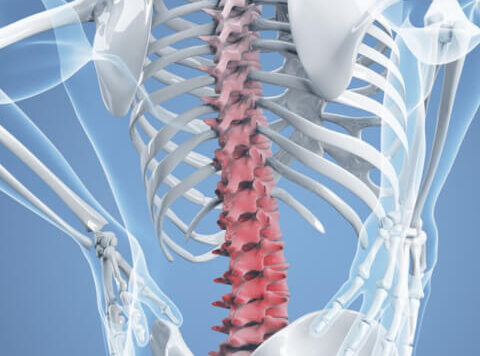It has been reported that 75% of adults have a history of lower back pain, which is mainly concentrated in middle-aged and older female patients in their 50s, and the incidence and recurrence of lower back pain is higher in special occupations such as military, police, and drivers.
What exactly is the etiology of lower back pain?
According to the clinical guidelines for lower back pain, lower back pain can be divided into three major categories: sciatica/radicular pain syndrome, atopic lower back pain, and nonspecific lower back pain.
The clinical causes of lower back pain are multi-source, and the more common ones are acute and chronic injury, inflammatory lesions (bacterial inflammation, non-bacterial inflammation), degenerative changes in the spine, abnormal bone development, poor posture, entrapment pain caused by visceral diseases, and mental factors, etc. Disc degeneration is a common cause of lower back pain, and changes in the microenvironment and cellular environment within the disc are important factors that induce disc degeneration. Changes in the microenvironment and cellular environment of the intervertebral disc are important factors in inducing disc degeneration.
How to prevent lower back pain?
First of all, from the standing posture, standing should not be too long, and after standing for a period of time, appropriate in situ activities can be carried out, especially the activities of the lumbar back to eliminate the fatigue of the lumbar back muscles; secondly, from the sitting posture, the correct sitting posture should be straight upper body, abdomen, jaw slightly closed, and both lower limbs together. This sitting posture because the lumbosacral ligaments and muscles are not overly stretched, so the lumbar spine can be kept straight, and the body consumes less energy. In the chair with a backrest, should be in the above posture on the basis of the lumbar back as closely as possible and lean on the back of the chair, so that the lumbosacral muscles are not too fatigued.
Finally, from a biomechanical point of view, sleeping posture is also very important. If the sleep posture is improper, not only can induce lumbar pain, but also cause cervical spondylosis. Side sleep should be slightly flexed point body, flat sleep should stretch the body, so that the muscles, especially the lumbar back muscles in a relaxed state, not only conducive to sleep and sleep, but also to relieve or prevent lumbago.
About the treatment of lower back pain
Regarding the treatment of lower back pain, the main treatment means include: exercise therapy, Chinese medicine acupuncture, massage therapy, medication, non-steroidal anti-inflammatory analgesics, inflammatory factor inhibitors and surgery. In addition to these methods, platelet-rich plasma (PRP) therapy has also become a new hot topic in the treatment of lower back pain.
A clinical study screened 109 patients who met the criteria for disc degeneration, and after strict inclusion and exclusion, 47 patients were left with a randomized, double-blind experimental design to investigate whether injecting autologous platelet-rich plasma into patients with disc degeneration could improve their low back pain and restore function. Twenty-nine patients were assigned to the experimental group for intra-disc PRP injection in degenerated discs, and 18 patients were assigned to the control group for injection of control reagents.
Questionnaires were administered at 1 week, 4 weeks, 8 weeks, 6 months, and 1 year for pain, functional activity, and satisfaction, including functional rating index (FRI) and pain numeric rating scale (NRS). 8-week follow-up results showed that PRP treatment improved patients’ symptoms in terms of functional rating index, pain numeric rating scale, and satisfaction scores compared with the control group, and the results were were statistically significant, and all patients who received PRP injections did not experience adverse effects such as infection, disc herniation, or nerve damage after the injection. During the 1-year follow-up, patients treated with PRP injections showed sustained improvement in functional class index scores.
In the treatment of lower back pain, PRP can act by releasing a variety of growth factors, including transforming growth factor-β (TGF-β), platelet-derived growth factor (PDGF), and vascular endothelial growth factor (VEGF). Among them, TGF-β has the function of stimulating collagen production, angiogenesis, epithelial regeneration and promoting the synthesis of proteases that inhibit collagen degradation; meanwhile, VEGF has the function of cell protection and affects cell proliferation. It was found that PRP can significantly contribute to the synthesis of extracellular matrix and cell proliferation in the nucleus pulposus, and significantly inhibit the inflammatory response mediated by pro-degradative enzymes and pro-inflammatory mediators, thus maintaining the normal cell differentiation and proliferation process.
Platelet-rich plasma is easy to make, easy to use, safe and free of immune rejection, and has been used in the treatment of disc degeneration with relatively satisfactory results for both physicians and patients, and can be used as a new biological therapy for clinical treatment of disc degeneration. With the increase of research on the application of PRP in recent years, PRP will be used in the treatment of more diseases in the future, bringing hope to patients for recovery.








